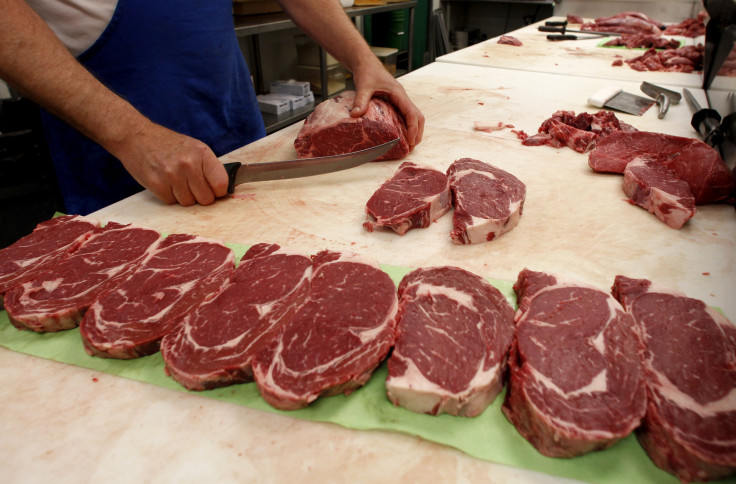Proposed ‘COOL’ Rule That Would Say Where US Grocery Meat Was Slaughtered Has Canada And Mexico Exporters Seething
The new regulation could be in effect by May 23

Walk into a typical U.S. grocery store today and you can often choose to buy an avocado grown in Mexico, or Chile or California, thanks to decade-old food labeling rules that for the first time in the U.S. required countries of origin to be displayed on many agricultural products.
When it comes to fresh meat, especially beef, however, the situation gets as complicated as the global food supply itself. Under the current Country of Origin Label, or COOL rule as it is known, labels for certain imported beef, chicken, pork, lamb, seafood and goat must state their countries of origin. Only meat products for animals born, raised and slaughtered in the U.S. say “Product of the United States.”
The new COOL rule – which could go into effect next month – would add new layers to the tale of how a calf became a steak sizzling on your stove. It would require labels to state something like this: “Born in country X, raised in country Y and slaughtered in country Z.”
This years-long effort by the Obama administration to implement this new COOL regulation led Mexico and Canada, top beef exporters to the U.S., to file a complaint with the World Trade Organization. They argue that the new rules would raise their costs as well as the costs to U.S. procurers of foreign beef and hog because they would have to segregate their stock by country of origin, and implement systems for maintaining the integrity of the information so that retailers could follow suit on packaging.
In July 2012, the WTO sided with the two countries by saying essentially that the proposed rule puts an unfair burden on foreign meat suppliers. It also pointed to the fact that many meat products, namely meat used in fast-food establishments, were exempted from the rules. In other words, the WTO didn’t object to the labeling effort, but rather to how the U.S. Department of Agriculture (USDA) is trying to implement it. The U.S. Trade Representative has appealed the WTO decision.
And on March 12, the USDA issued a new proposed rule that it says addressed the WTO’s objections. The comment period for the proposed rules ends next Thursday and the final rules are expected to go into effect on May 23. Industry watchers are currently poring over the new complicated set of proposed regulations, but so far the reaction to the new proposal isn’t much different than the old one.
“The labeling requirement’s real effect is the cost it imposes on meat-packers that purchase foreign-raised cattle,” said K. William Watson, a trade policy expert at the libertarian Cato Institute, in a Reuters opinion piece. “The law includes regulations mandating separation of livestock and meat based on the animal’s national origin.”
For its part, the National Cattlemen’s Beef Association (NCBA) this week criticized the administration’s decision to challenge the WTO ruling, saying it risks retaliatory measures from Mexico and Canada.
“Instead of working diligently to bring the United States into WTO compliance, our government has opted to engage in an appeal process, which jeopardizes our strong trade relationship with Canada and Mexico,” said Bob McCan, NCBA vice president. “An appeal is the wrong answer and a waste of valuable resources.”
The Food Marketing Institute, which represents food retailers, also opposes the U.S. challenge to the WTO ruling, saying it “will set the stage for retaliatory tariffs.”
“If tariffs are imposed by our most important trading partners, we will inevitably witness job losses and price increases,” the group stated in response to the proposed new rules.
Meanwhile, a coalition of 200 organizations from 45 states wrote a letter to USDA Secretary Tom Vilsack expressing support for more specific COOL rules for meat product.
“The only acceptable way to respond to the WTO challenge is to make labels more informative for consumers, not water them down,” the letter states.
© Copyright IBTimes 2024. All rights reserved.






















